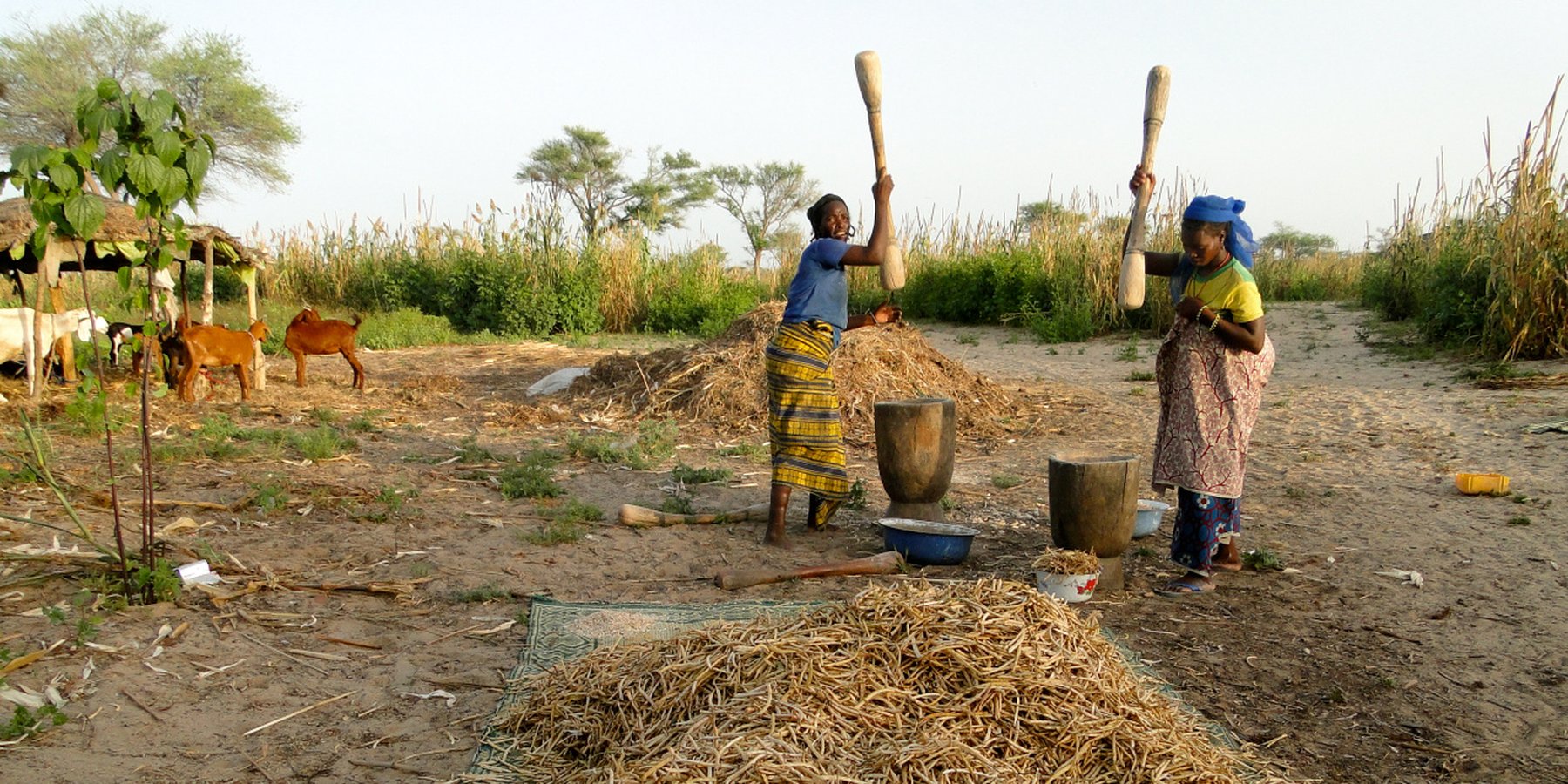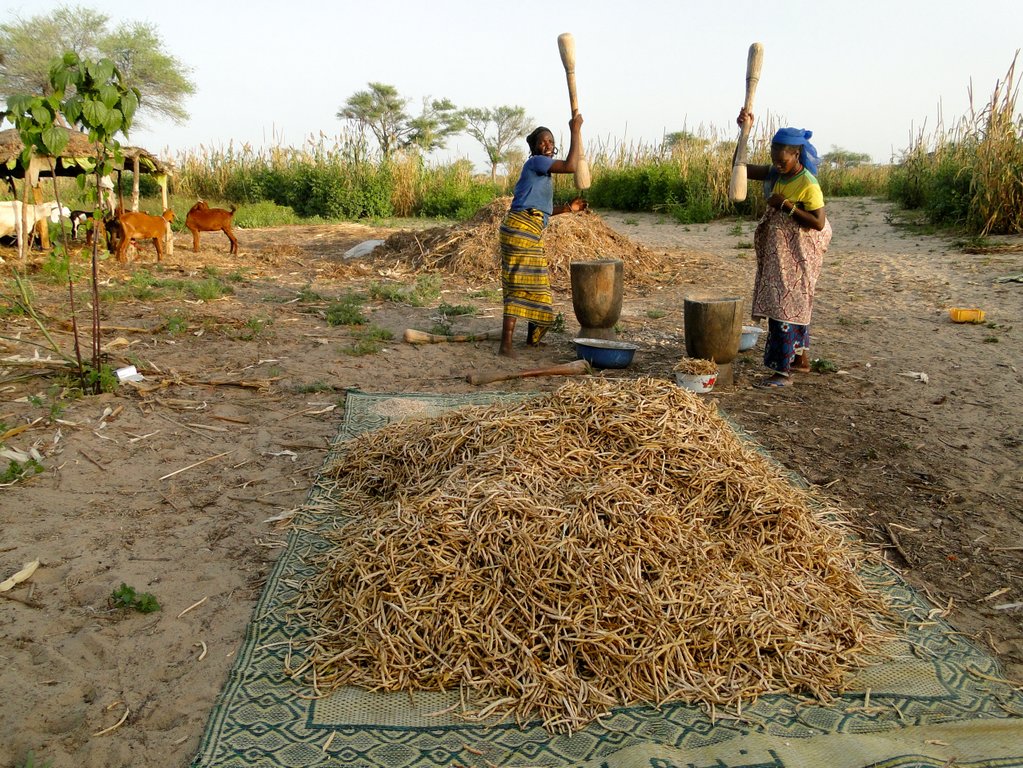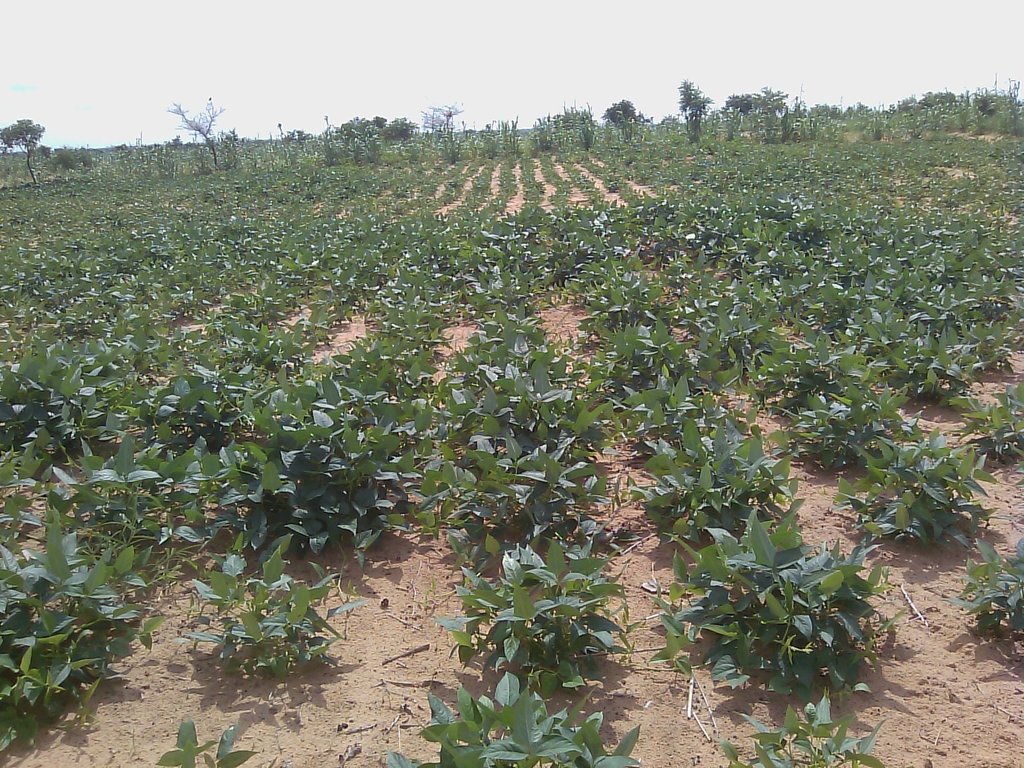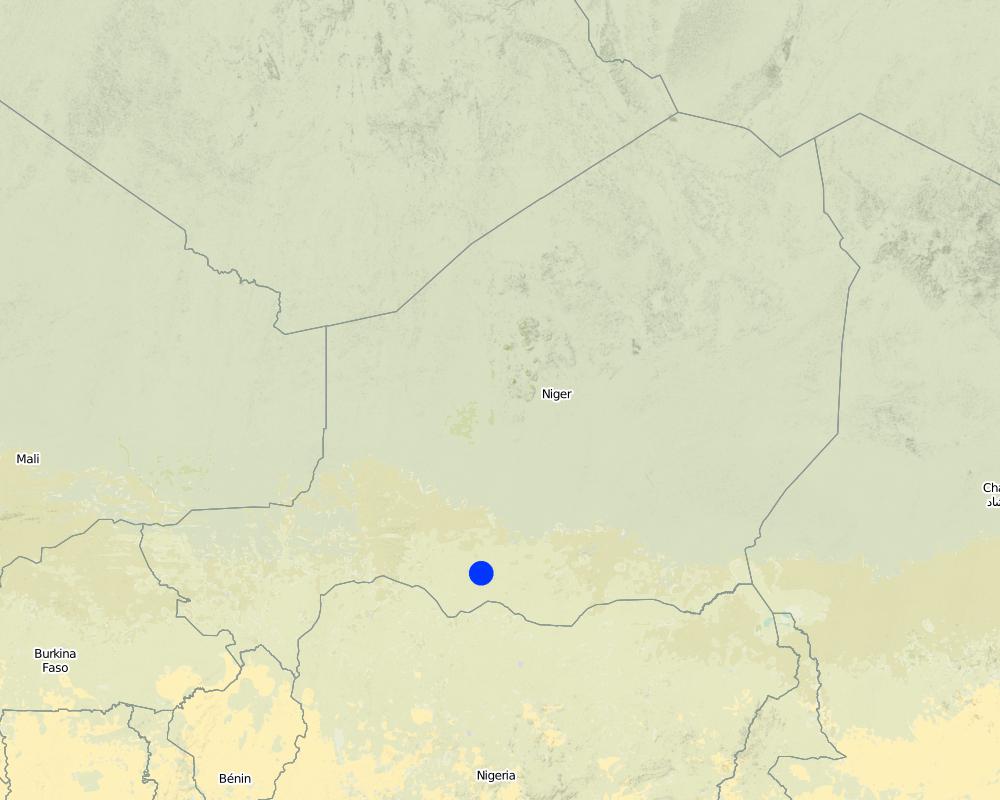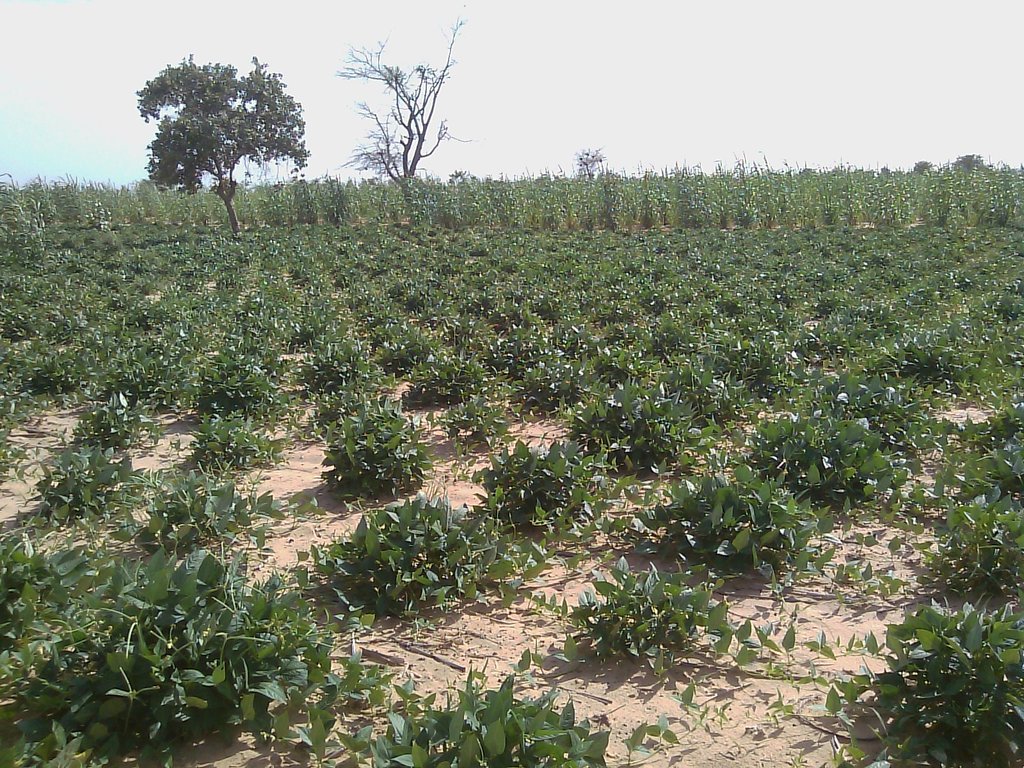Variété améliorée du niébé (IT90k372-1-2) [Niger]
- Creation:
- Update:
- Compiler: Judith Macchi
- Editors: Christine Lottje, Rabé Mahamane Moctar
- Reviewers: Christine Lottje, David Beritault, Alexandra Gavilano
''Waké mai jan hanci''
technologies_663 - Niger
View sections
Expand all Collapse all1. General information
1.2 Contact details of resource persons and institutions involved in the assessment and documentation of the Technology
Name of project which facilitated the documentation/ evaluation of the Technology (if relevant)
Book project: where people and their land are safer - A Compendium of Good Practices in Disaster Risk Reduction (DRR) (where people and their land are safer)Name of the institution(s) which facilitated the documentation/ evaluation of the Technology (if relevant)
HEKS (Hilfswerk der Evangelischen Kirchen Schweiz) (HEKS (Hilfswerk der Evangelischen Kirchen Schweiz)) - Switzerland1.3 Conditions regarding the use of data documented through WOCAT
The compiler and key resource person(s) accept the conditions regarding the use of data documented through WOCAT:
Ja
1.4 Declaration on sustainability of the described Technology
Is the Technology described here problematic with regard to land degradation, so that it cannot be declared a sustainable land management technology?
Nee
1.5 Reference to Questionnaire(s) on SLM Approaches (documented using WOCAT)
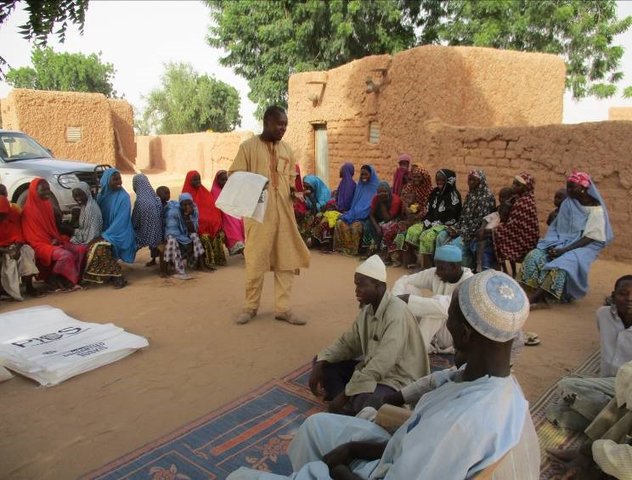
Formation et sensibilisation à l'utilisation de techniques agricoles … [Niger]
Cette approche consiste à vulgariser des techniques agricoles améliorées permettant d'augmenter les productions agricoles. Des producteurs démonstrateurs sont formés et des journées de démonstration sont organisées afin de sensibiliser les autres producteurs à l’utilisation de ces techniques améliorées.
- Compiler: Judith Macchi
2. Description of the SLM Technology
2.1 Short description of the Technology
Definition of the Technology:
La variété améliorée de niébé (IT90k372-1-2) est à cycle court, à résistance multiple et est adaptée à la zone agro-écologique tropicale.
2.2 Detailed description of the Technology
Description:
Comme tout le Niger, le département de Mayahi dans la partie sud-centrale du pays se caractérise par un environnement naturel austère caractérisé par de faibles précipitations, variable dans l'espace et le temps, et des températures élevées, avec une tendance à augmenter du plus en raison des effets des changements climatiques, accentuent l'aridité de la région. À 3,1%, la croissance de la population est très élevée, la pression sur les ressources naturelles a également fortement augmenté et l'insécurité alimentaire chronique affecte régulièrement la majorité de la population.
Le mil et le niébé sont les principaux produits agricoles de la région, mais en raison de la pression démographique, les terres arables sont pratiquement exploitées. Par conséquent, la sécurité alimentaire ne peut être obtenue que grâce à une production accrue.
La variété de niébé IT90K-372-1-2 est de nature génétique lignée et a été développé en 1990 par l’Institut Internationale de l’Agriculture Tropicale (IIAT) basée à Ibadan au Nigeria. Elle a un cycle de développement de 60 à 70 jours avec un plant à port semi-érigé et une floraison étalée. Le rendement potentiel de la IT90K-372-1-2 est de 1.2 à 1.5 tonne par ha. Les grains sont de couleur blanche avec un nœud de couleur rouge. Cette variété est résistante à la sécheresse (Iso-hyète 300–600 mm), tolérante au puceron mais sensible aux striga, aux thrips et aux bruches. Elle pousse aussi bien sur les terres fertiles que sur les terres dégradées. Son cycle s’adapte également bien avec la pluviométrie, particulièrement dans les régions à déficit pluviométrique chronique. Grâce à sa capacité de fixation symbiotique de l’azote atmosphérique, l’insertion du niébé dans les rotations culturales permet de combler les besoins en engrais azoté des cultures subséquentes (Bationo et al., 1990). Cette variété a été inscrite dans le catalogue des variétés améliorées du Niger en 2010 par l’Institut National de Recherche Agronomique du Niger (INRAN).
La période de semis recommandée est la première quinzaine du mois de juillet. Le champ doit être bien labouré de façon à favoriser un bon développement des racines. Dans les zones à sols plus fragiles et enclins à l’érosion, il est conseillé adoptez le labour minimum ou le non-labour. Trois graines doivent être semé par poquet pour être démariez à 2 plants/pied deux semaines après semis. Ce dernier ce fait dans un trou profond de 2,5 à 5 cm sur billons ou à plat selon le type de préparation de sol effectué. Il est utilisé environ 20 kg/ha de graines de IT90K-372-1-2 avec un écartement de 75cmx20 cm. Cette variété n’est pas trop exigeante en engrais azoté parce que comme toute variété du niébé, elle fixe l’azote contenu dans l’air au moyen des nodosités que renferment ses racines. Il est cependant indispensable de l’appliquer en petite quantité (environs 15 kg/ha d’azote) au démarrage sur les sols pauvres. Un excès d’azote entraîne une faible production des graines et une forte croissance végétative. On recommande environ 30 kg de P/ha sous forme de Supa pour la production de niébé afin d’aider la culture à bien noduler pour fixer l’azote atmosphérique. Le désherbage à la houe est la méthode la plus couramment utilisée par les paysans, il se fait une première fois deux semaines après semis et une seconde fois 4–5 semaines après le semis pour garder le champ exempt d’adventices.
Le niébé contribue pour une part substantielle à combler les besoins alimentaires des populations dans les pays tropicaux (Bressani 1997). La variété IT90K372-1-2 est appréciée des producteurs en raison de la taille de ses grains (grosse), de la couleur de leurs graines (blanche) et du goût.
2.3 Photos of the Technology
2.5 Country/ region/ locations where the Technology has been applied and which are covered by this assessment
Country:
Niger
Region/ State/ Province:
Maradi
Further specification of location:
Mayahi
Specify the spread of the Technology:
- evenly spread over an area
If precise area is not known, indicate approximate area covered:
- 0.1-1 km2
Comments:
la technologie a été apportée au niveau de 20 villages avec 8 exploitants par village et 0.5 ha par producteur.
Map
×2.6 Date of implementation
Indicate year of implementation:
2014
2.7 Introduction of the Technology
Specify how the Technology was introduced:
- during experiments/ research
- through projects/ external interventions
Comments (type of project, etc.):
Il s'agit d'un projet de recherche et développement coordonné par un enseignant-chercheur
3. Classification of the SLM Technology
3.1 Main purpose(s) of the Technology
- improve production
- reduce, prevent, restore land degradation
- adapt to climate change/ extremes and its impacts
- create beneficial economic impact
3.2 Current land use type(s) where the Technology is applied

Cropland
- Annual cropping
Annual cropping - Specify crops:
- cereals - millet
- cereals - sorghum
- legumes and pulses - peas
- oilseed crops - groundnuts
Number of growing seasons per year:
- 1
Comments:
Principales cultures (vivrières et commerciales): mil, sorgho, niébé, arachide
3.4 Water supply
Water supply for the land on which the Technology is applied:
- rainfed
3.5 SLM group to which the Technology belongs
- integrated soil fertility management
- integrated pest and disease management (incl. organic agriculture)
- improved plant varieties/ animal breeds
3.6 SLM measures comprising the Technology

agronomic measures
- A2: Organic matter/ soil fertility
- A5: Seed management, improved varieties
3.7 Main types of land degradation addressed by the Technology

chemical soil deterioration
- Cn: fertility decline and reduced organic matter content (not caused by erosion)
Comments:
Grâce à sa capacité de fixation symbiotique de l’azote atmosphérique, l’insertion du niébé dans les rotations culturales permet de
combler les besoins en engrais azoté des cultures subséquentes (Bationo et al., 1990).
3.8 Prevention, reduction, or restoration of land degradation
Specify the goal of the Technology with regard to land degradation:
- reduce land degradation
- restore/ rehabilitate severely degraded land
4. Technical specifications, implementation activities, inputs, and costs
4.1 Technical drawing of the Technology
Technical specifications (related to technical drawing):
C'est une variété semi érigée avec un écartement de 0,7m entre les lignes et 0,5m entre les poquets soit une densité de 28.000 poquets/hectare. La quantité de semence pour emblaver un hectare est de 20kg. Le cycle de production est de 60 à 70 jours avec un rendement potentiel de 1,2 à 1,5 tonne/hectare.
Author:
Rabé Mahamane Moctar
Date:
28/08/2014
4.2 General information regarding the calculation of inputs and costs
Specify how costs and inputs were calculated:
- per Technology area
Indicate size and area unit:
l'unité de la superficie est hectare (ha)
other/ national currency (specify):
FRANC CFA
If relevant, indicate exchange rate from USD to local currency (e.g. 1 USD = 79.9 Brazilian Real): 1 USD =:
617.0
Indicate average wage cost of hired labour per day:
1250 FCFA homme-jour (HJ)
4.3 Establishment activities
| Activity | Timing (season) | |
|---|---|---|
| 1. | Préparation du terrain | Mai |
| 2. | Sémis | Juillet |
| 3. | Travaux d'entretien | Juillet |
| 4. | Traitement phytosanitaire (grain de neem) | Août |
| 5. | Récolte | Septembre |
| 6. | Stockage | Octobre |
4.4 Costs and inputs needed for establishment
| Specify input | Unit | Quantity | Costs per Unit | Total costs per input | % of costs borne by land users | |
|---|---|---|---|---|---|---|
| Labour | semis à récolte | H-jours | 20.0 | 1250.0 | 25000.0 | 100.0 |
| Plant material | semences | kg | 15.0 | 500.0 | 7500.0 | |
| Fertilizers and biocides | fumure organique | charette | 40.0 | 200.0 | 8000.0 | 100.0 |
| Fertilizers and biocides | fongicide | sachet | 1.0 | 500.0 | 500.0 | 100.0 |
| Fertilizers and biocides | Engrais | kg | 75.0 | 300.0 | 22500.0 | 100.0 |
| Total costs for establishment of the Technology | 63500.0 | |||||
| Total costs for establishment of the Technology in USD | 102.92 | |||||
If land user bore less than 100% of costs, indicate who covered the remaining costs:
Le projet a financé les coûts des semences et l'encadrement
4.5 Maintenance/ recurrent activities
| Activity | Timing/ frequency | |
|---|---|---|
| 1. | Préparation du terrain | Mai |
| 2. | Sémis | Juillet |
| 3. | Travaux d'entretien | Juillet |
| 4. | Traitement phytosanitaire (grain de neem) | Août |
| 5. | Récolte | Septembre |
| 6. | Stockage | Octobre |
4.6 Costs and inputs needed for maintenance/ recurrent activities (per year)
| Specify input | Unit | Quantity | Costs per Unit | Total costs per input | % of costs borne by land users | |
|---|---|---|---|---|---|---|
| Labour | semis à récolte | H-jours | 20.0 | 1250.0 | 25000.0 | 100.0 |
| Plant material | semences | kg | 15.0 | 500.0 | 7500.0 | |
| Fertilizers and biocides | Fumure organique | charette | 40.0 | 200.0 | 8000.0 | 100.0 |
| Fertilizers and biocides | Fongicide | sachet | 1.0 | 500.0 | 500.0 | 100.0 |
| Fertilizers and biocides | Emgrais | kg | 75.0 | 300.0 | 22500.0 | 100.0 |
| Total costs for maintenance of the Technology | 63500.0 | |||||
| Total costs for maintenance of the Technology in USD | 102.92 | |||||
4.7 Most important factors affecting the costs
Describe the most determinate factors affecting the costs:
Les engrais chimiques affectent le plus les coûts de la technologie
5. Natural and human environment
5.1 Climate
Annual rainfall
- < 250 mm
- 251-500 mm
- 501-750 mm
- 751-1,000 mm
- 1,001-1,500 mm
- 1,501-2,000 mm
- 2,001-3,000 mm
- 3,001-4,000 mm
- > 4,000 mm
Specify average annual rainfall (if known), in mm:
250.00
Specifications/ comments on rainfall:
Saison des pluies de juillet à septembre.
Indicate the name of the reference meteorological station considered:
Mayahi
Agro-climatic zone
- semi-arid
5.2 Topography
Slopes on average:
- flat (0-2%)
- gentle (3-5%)
- moderate (6-10%)
- rolling (11-15%)
- hilly (16-30%)
- steep (31-60%)
- very steep (>60%)
Landforms:
- plateau/plains
- ridges
- mountain slopes
- hill slopes
- footslopes
- valley floors
Altitudinal zone:
- 0-100 m a.s.l.
- 101-500 m a.s.l.
- 501-1,000 m a.s.l.
- 1,001-1,500 m a.s.l.
- 1,501-2,000 m a.s.l.
- 2,001-2,500 m a.s.l.
- 2,501-3,000 m a.s.l.
- 3,001-4,000 m a.s.l.
- > 4,000 m a.s.l.
Indicate if the Technology is specifically applied in:
- not relevant
5.3 Soils
Soil depth on average:
- very shallow (0-20 cm)
- shallow (21-50 cm)
- moderately deep (51-80 cm)
- deep (81-120 cm)
- very deep (> 120 cm)
Soil texture (topsoil):
- coarse/ light (sandy)
Soil texture (> 20 cm below surface):
- coarse/ light (sandy)
Topsoil organic matter:
- low (<1%)
If available, attach full soil description or specify the available information, e.g. soil type, soil PH/ acidity, Cation Exchange Capacity, nitrogen, salinity etc.
Profondeur de la nappe supérieure à 50m
5.4 Water availability and quality
Ground water table:
> 50 m
Availability of surface water:
poor/ none
Water quality (untreated):
poor drinking water (treatment required)
Is water salinity a problem?
Nee
Is flooding of the area occurring?
Nee
5.5 Biodiversity
Species diversity:
- low
Habitat diversity:
- low
5.6 Characteristics of land users applying the Technology
Sedentary or nomadic:
- Sedentary
Market orientation of production system:
- mixed (subsistence/ commercial)
Off-farm income:
- less than 10% of all income
Relative level of wealth:
- very poor
Individuals or groups:
- individual/ household
Level of mechanization:
- manual work
Gender:
- women
- men
Age of land users:
- youth
- middle-aged
Indicate other relevant characteristics of the land users:
Les chefs d’exploitations sont en moyenne âgés de 48 ans (± 12ans). Pour le mode d’acquisition des terres, l’héritage et l’achat prédominent. La location, le droit de hache, don et gage de terres restent très faibles. Les céréales sont prioritairement destinées à l’autoconsommation et leurs résidus (pailles et chaumes) réservés aux animaux.
5.7 Average area of land used by land users applying the Technology
- < 0.5 ha
- 0.5-1 ha
- 1-2 ha
- 2-5 ha
- 5-15 ha
- 15-50 ha
- 50-100 ha
- 100-500 ha
- 500-1,000 ha
- 1,000-10,000 ha
- > 10,000 ha
Is this considered small-, medium- or large-scale (referring to local context)?
- small-scale
5.8 Land ownership, land use rights, and water use rights
Land ownership:
- individual, not titled
Land use rights:
- individual
Water use rights:
- communal (organized)
5.9 Access to services and infrastructure
health:
- poor
- moderate
- good
education:
- poor
- moderate
- good
technical assistance:
- poor
- moderate
- good
employment (e.g. off-farm):
- poor
- moderate
- good
markets:
- poor
- moderate
- good
energy:
- poor
- moderate
- good
roads and transport:
- poor
- moderate
- good
drinking water and sanitation:
- poor
- moderate
- good
financial services:
- poor
- moderate
- good
6. Impacts and concluding statements
6.1 On-site impacts the Technology has shown
Socio-economic impacts
Production
crop production
Quantity before SLM:
108kg
Quantity after SLM:
606kg
Comments/ specify:
La production agricole est multipliée par 5.6
Income and costs
expenses on agricultural inputs
Comments/ specify:
les semences améliorées (1,000 F CFA / kg) sont plus chères que les semences locales (500 F CFA / kg)
farm income
Quantity before SLM:
moyenne de 43,200 FCFA/an
Quantity after SLM:
moyenne de 240,000 FCFA/an
Comments/ specify:
Les revenus agricoles sont multipliés par 5.5
Socio-cultural impacts
food security/ self-sufficiency
Ecological impacts
Climate and disaster risk reduction
drought impacts
6.3 Exposure and sensitivity of the Technology to gradual climate change and climate-related extremes/ disasters (as perceived by land users)
Gradual climate change
Gradual climate change
| Season | increase or decrease | How does the Technology cope with it? | |
|---|---|---|---|
| seasonal temperature | dry season | increase | well |
| other gradual climate change | variabilité de la pluie (augmentation des précipitations extrêmes, anomalies entre les saisons) | increase | well |
Climate-related extremes (disasters)
Climatological disasters
| How does the Technology cope with it? | |
|---|---|
| drought | well |
6.4 Cost-benefit analysis
How do the benefits compare with the establishment costs (from land users’ perspective)?
Short-term returns:
positive
Long-term returns:
positive
How do the benefits compare with the maintenance/ recurrent costs (from land users' perspective)?
Short-term returns:
positive
Long-term returns:
positive
6.5 Adoption of the Technology
- 11-50%
Of all those who have adopted the Technology, how many did so spontaneously, i.e. without receiving any material incentives/ payments?
- 11-50%
6.6 Adaptation
Has the Technology been modified recently to adapt to changing conditions?
Nee
6.7 Strengths/ advantages/ opportunities of the Technology
| Strengths/ advantages/ opportunities in the land user’s view |
|---|
| 1) Productivité |
| 2) Cycle court de la technologie |
| 3) Résistance multiples |
| 4) Couverture alimentaire |
| Strengths/ advantages/ opportunities in the compiler’s or other key resource person’s view |
|---|
| 1) Précocité |
| 2) Résistance aux ravageurs |
| 3) Rendement élevé |
| 4) Tolérance à la pauvreté du sol |
6.8 Weaknesses/ disadvantages/ risks of the Technology and ways of overcoming them
| Weaknesses/ disadvantages/ risks in the land user’s view | How can they be overcome? |
|---|---|
| 1) Coût des semences | Aide des ONG et projets |
| 2) Sensibles au striga | Arrachage |
| 3) Exigence de suivi |
| Weaknesses/ disadvantages/ risks in the compiler’s or other key resource person’s view | How can they be overcome? |
|---|---|
| 1) Coût des intrants (engrais et semences) | Subvention des intrants par l'état |
7. References and links
7.1 Methods/ sources of information
- field visits, field surveys
10
- interviews with land users
10
- interviews with SLM specialists/ experts
3
- compilation from reports and other existing documentation
2
When were the data compiled (in the field)?
12/10/2016
7.2 References to available publications
Title, author, year, ISBN:
Magah I.M., (s.d), La culture du niébé au Sahel. INRAN / Niger, 5 p.
Links and modules
Expand all Collapse allLinks

Formation et sensibilisation à l'utilisation de techniques agricoles … [Niger]
Cette approche consiste à vulgariser des techniques agricoles améliorées permettant d'augmenter les productions agricoles. Des producteurs démonstrateurs sont formés et des journées de démonstration sont organisées afin de sensibiliser les autres producteurs à l’utilisation de ces techniques améliorées.
- Compiler: Judith Macchi
Modules
No modules


